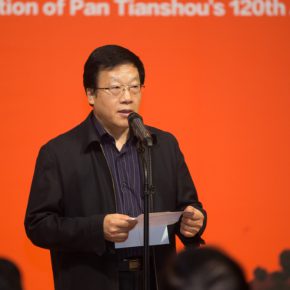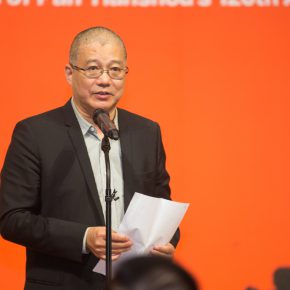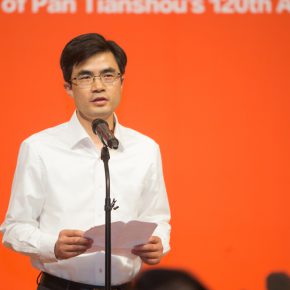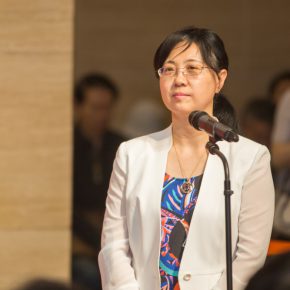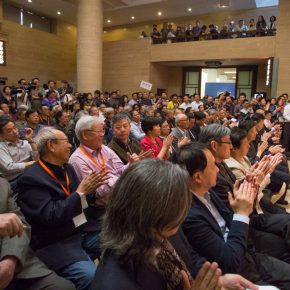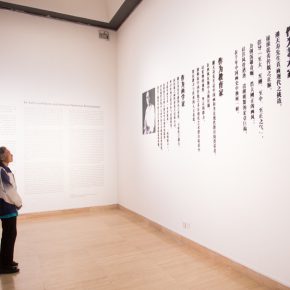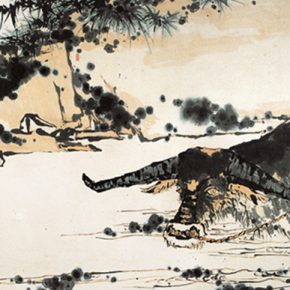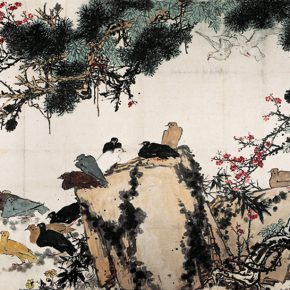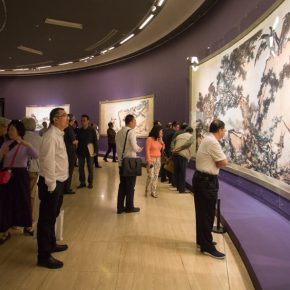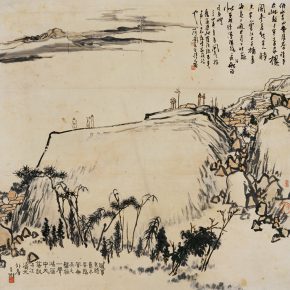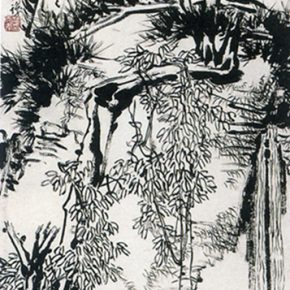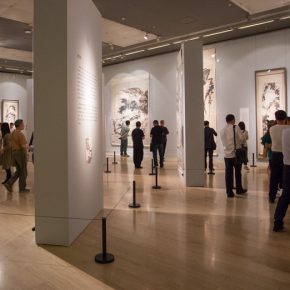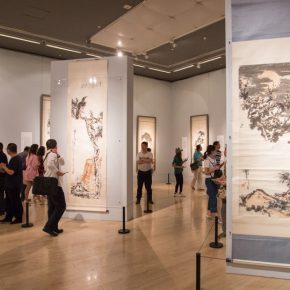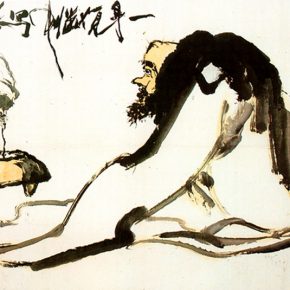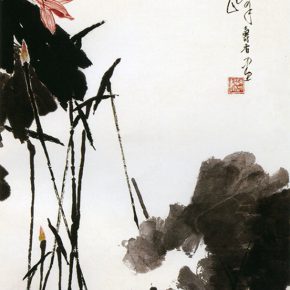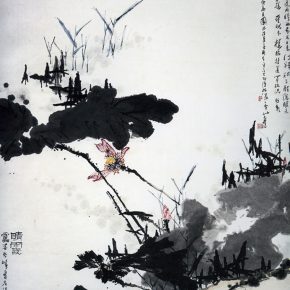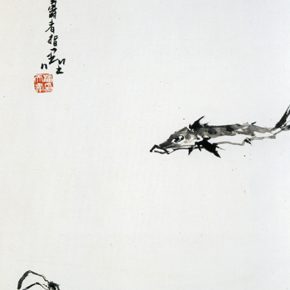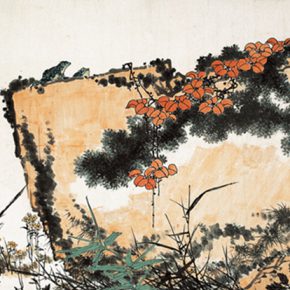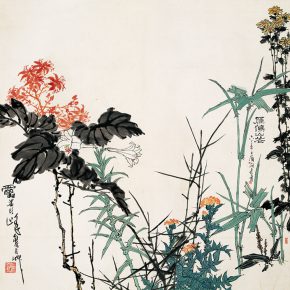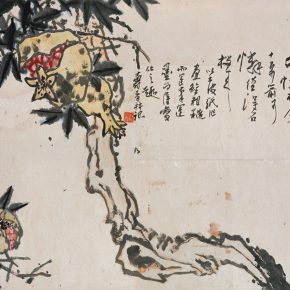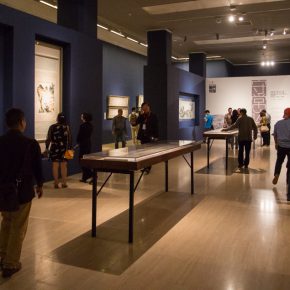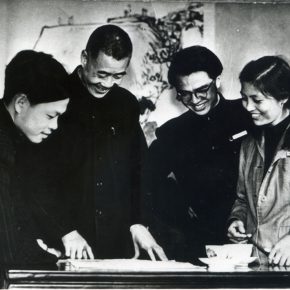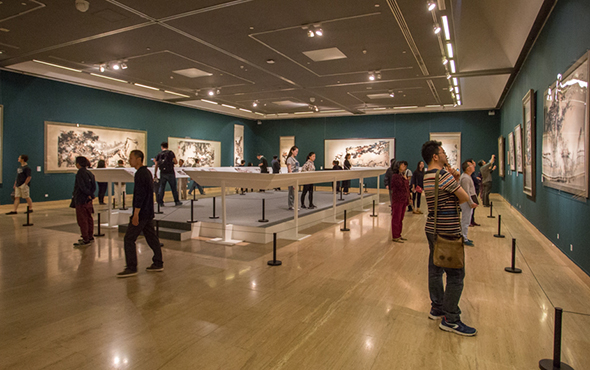
Pan Tianshou was a master of Chinese painting, art educator and art theorist in the 20th century. He adhered to tradition in the tide of the Eastward transmission of Western Sciences, and continued the millennium pulse of traditional painting when facing modern challenges, becoming an insurmountable peak in the history of modern Chinese painting. It coincides with the 120th anniversary of Pan Tianshou’s birth of the year, so “An Ethos of Fortitude – An Exhibition to Commemorate the 120th Anniversary of Pan Tianshou’s Birth”, jointly hosted by the Ministry of Culture of China, the China Federation of Literary and Art Circles and the Zhejiang Provincial People’s Government, and co-organized by the National Art Museum of China, the China Artists Association, Zhejiang Provincial Department of Culture and China Academy of Art, opened at the National Art Museum of China. The exhibition is devoted to research on Pan Tianshou’s artistic contributions, cultural contributions and educational contributions with more than 120 works, highlighting the historical significance, the significance of the times and the significance of the world.
Seeing the creation and research of Pan Tianshou, we can find that it has always been within traditional culture, especially under the impact of the strong culture of the West, he adhered to the significance of the traditional culture and national painting. His personal creation advocates “the biggest, the strongest, the most middle and upright”, striving to create the deep, powerful, unique and broad, vast and upright style, with the powerful, clear, broad and huge structure to fly his own colors in the millennial history of Chinese painting.
As an important exhibition of commemorative events, it deeply integrates?research, planning and presentation, and it is divided into 6 sections in the structure, including the “Noble and Fortitude”, “Only Mighty and Brave”, “Unique Form and Broad-Mind”, “Yandang Mountain Flowers”, “Inheriting the Traditional and Pursuing the Change”, “Career of Drinking Water”, showcasing Pan Tianshou’s fortitude creation in different stages, and also prompting the cultural ambitions in his creation, theory and the conflict between the east and the west.
At the entrance to the exhibition, the status of Pan Tianshou is used to start the world of Chinese painting and calligraphy, the text on the exhibition wall suggests Pan Tianshou’s basic theory of painting, which is the basic context of the exhibition. “Noble and Fortitude” section mainly showcases Pan Tianshou’s representative masterpieces during his prime time, and also highlighting the greatest characteristics of Pan Tianshou’s art – “fortitude”. Pan Tianshou’s works decisively and strongly use brushstrokes, with dense and thick, strong and simple ink, a unique and broad composition, highlighting the performance of “power” and “spirit”.
“Only the Mighty and Brave” section highlights the ink achievements of Pan Tianshou’s works. Pan Tianshou considered the heritage of his predecessors’ achievements and difficult training of the basic skills as a starting point, while he stuck to the creative principle of expansion based on the local culture. At the same time, he insisted on the overall accomplishment of the painter, and considered the painting as the externalization of the full personality of the people (especially the intellectuals with comprehensive development), paying attention to the values hidden in the works. His brush and ink reversed the weak and light literati painting at that time, while he admired the ancient strong and simple form as recorded by the inscriptions of the Han and Wei Dynasties, which is anaesthetic response to the big change in modern Chinese society, and a symbol of the group psychological expectation of the self-reliance of the Chinese nation. Through his brush and ink, it reflects the trend of a time and the national spirit.
“Unique Form and Broad-Mind” section focuses on Pan Tianshou’s creative ingenuity in the composition of Chinese painting. Among the modern painters, Pan Tianshou’s works have a distinctive feature in the composition, and he obviously opened the distance with his predecessor, looking for a clear order in the painting. Through the analysis of the composition of ancient Chinese paintings, he combined this with his own creative experience, Pan summed up specific composition laws, from the arrangement, selection and composition of the objects, so as to use primary and secondary, empty and full, thin and thick,contrasting, echoing, crossing, irregular, the three-point relationship, the relationship of the triangle, the problem of the parallel line, the center of gravity, the oblique and straight, the eye of painting, background, the processing of the blank, four corners and four lines, the pulse of spirit, the opening and closing, the imbalance and the balance, and so on, as well as the significances of inscriptions and seals in the composition, which is rather comprehensive and specific. The clear order and strong sense of power, carrying dynamic life in the static – it is Pan Tianshou’s very unique composition.
“Yandang Mountain Flowers” section starts from the sketches of Yandang Mountain created by the Pan Tianshou since the middle 1950s, displaying Pan Tianshou’s ideological trajectory, practice and exploration in the creative road of “the tradition which gives birth to the new”. In the political and cultural context at that time, Pan Tianshou also traveled to the mountains and rivers, and thinks of the shape, taking it as an opportunity to create a series of works marking the transformation of his style.
“Inheriting the Tradition and Pursuing the Change” section presents the inheritance and innovation of art creation. Pan Tianshou firmly believed that reform should be based on rationality, carrying forward the tradition, rather than making it bleak or even annihilating it. By the right of the ancestry to create the now, getting rid of the stale and bring forth the fresh, Pan Tianshou both inherited the tradition and developed the tradition with an accurate sense of creativity and distinctive artistic appearance, making a major breakthrough in the evolution of self-discipline in Chinese painting.
The “Career of Drinking Water” section is from archives, manuscripts and other literature to comprehensively present Pan Tianshou’s life, educational contribution and painting ideas. Especially highlighting the contribution of Pan Tianshou to the teaching of modern Chinese painting, and reflects on the education and inheritance of the national art at present. In 1923 Pan Tianshou taught at the Shanghai Art School, together with Zhu Wenyun to create the first Department of Chinese Painting in China, and began his art education career. In 1928, he was invited by the National Hangzhou Institute of Art and appointed as a professor of Chinese painting, and he has never been separated from this school since then. Pan Tianshou used many aspects of academic accomplishments to have a macro grasping and keen insight, making a systematic and in-depth thinking of the development and teaching of Chinese painting, and practiced it, so he made an indestructible contribution to the establishment of the modern, complete, independent teaching system of Chinese painting.
The creation by Pan Tianshou combed through the cultural self-confidence in the changing and complex cultural environment, the deep, strong, verdant and luxuriant artworks made a response to the self-discipline evolution of Chinese painting. At present, the Chinese nation put forward cultural self-confidence in the road of great revival, so the exhibition of commemorating the 120th anniversary of the birth of Pan Tianshou is not only an observation of the development of Chinese traditional painting in the 20th century, but also offers the cultural and artistic development a new inspiration.
The exhibition remains on view till May 14. During the exhibition it holds five thematic academic seminars of “Pan Tianshou and Cultural Self-Confidence”: Firstly, the National Schema and National Meteorology – Pan Tianshou’s Cultural Self-Confidence, secondly, From “South and North” to “East and West” – Pan Tianshou’s Cultural View”, thirdly, Brush and Ink, Composition, Artistic Conception, Life Style – Pan Tianshou’s Art Problems, Four Double Peaks Standing Upright, the Tradition Gave Birth to the New – Pan Tianshou and Chinese Modern Art Education, fifthly, Spirit Can Shake Heaven and Earth – Pan Tianshou and the Tradition of Chinese Poetry.
Text edited by Zhang Wenzhi, translated by Chen Peihua and edited by Sue/CAFA ART INFO
Photo by Hu Sichen/CAFA ART INFO
Images of the works courtesy of the organizer.




